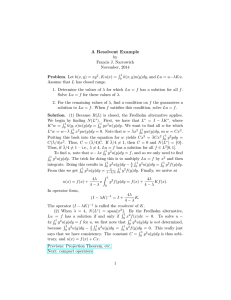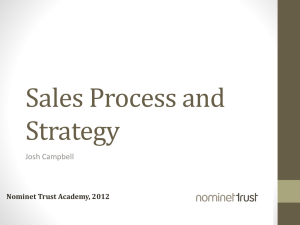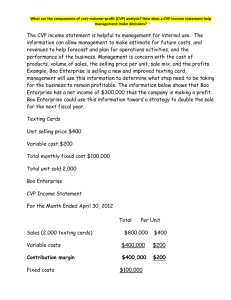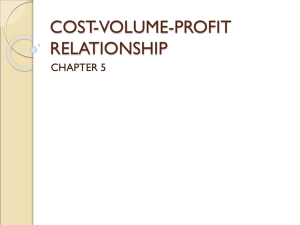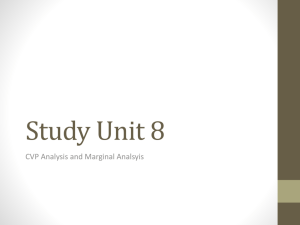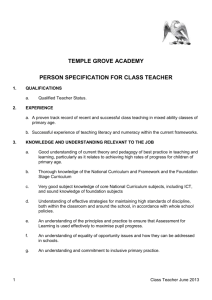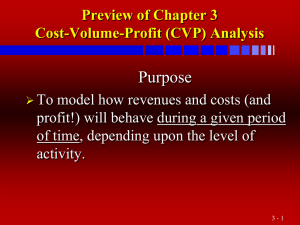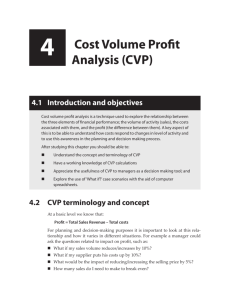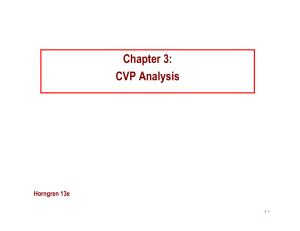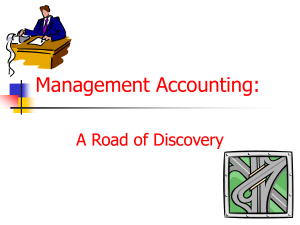Cost Decisions - mbatools.co.uk
advertisement
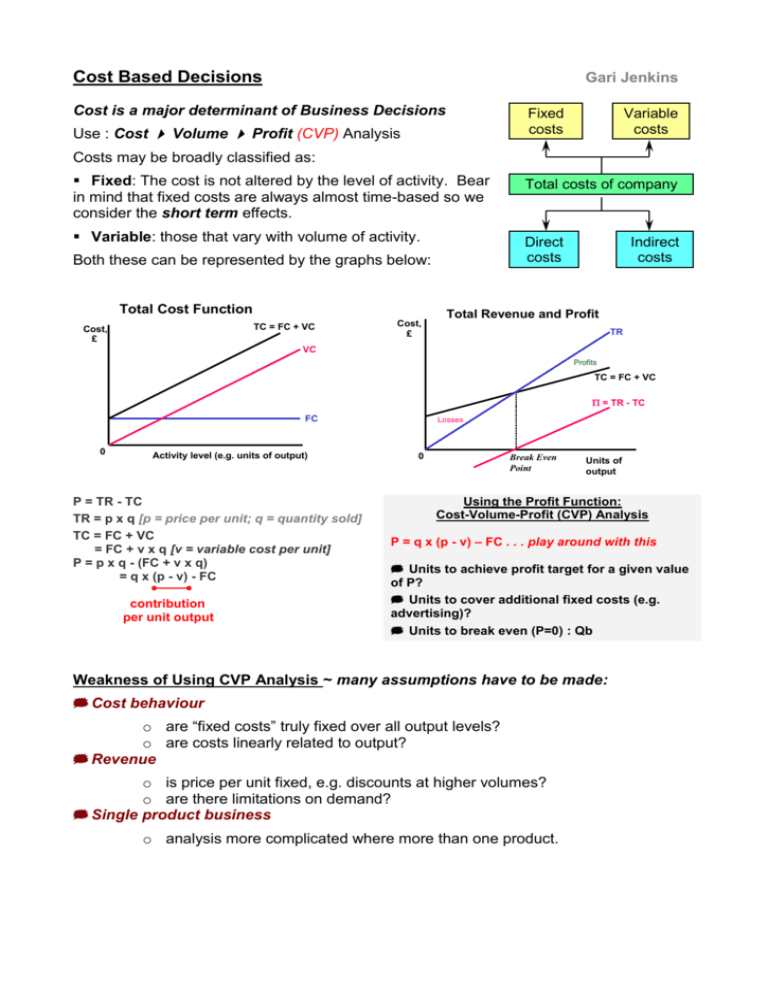
Cost Based Decisions Gari Jenkins Cost is a major determinant of Business Decisions Fixed costs Use : Cost Volume Profit (CVP) Analysis Variable costs Costs may be broadly classified as: Fixed: The cost is not altered by the level of activity. Bear in mind that fixed costs are always almost time-based so we consider the short term effects. Variable: those that vary with volume of activity. Direct costs Both these can be represented by the graphs below: Total Cost Function TC = FC + VC Cost, £ Cost, £ Total costs of company Indirect costs Total Revenue and Profit TR VC Profits TC = FC + VC = TR - TC FC 0 Activity level (e.g. units of output) P = TR - TC TR = p x q [p = price per unit; q = quantity sold] TC = FC + VC = FC + v x q [v = variable cost per unit] P = p x q - (FC + v x q) = q x (p - v) - FC contribution per unit output Losses 0 Break Even Point Units of output Using the Profit Function: Cost-Volume-Profit (CVP) Analysis P = q x (p - v) – FC . . . play around with this Units to achieve profit target for a given value of P? Units to cover additional fixed costs (e.g. advertising)? Units to break even (P=0) : Qb Weakness of Using CVP Analysis ~ many assumptions have to be made: Cost behaviour o are “fixed costs” truly fixed over all output levels? o are costs linearly related to output? Revenue o is price per unit fixed, e.g. discounts at higher volumes? o are there limitations on demand? Single product business o analysis more complicated where more than one product. Other Decisions based on Cost Analysis • Discontinuation Should an existing cost object (product, department, office etc.) be retained if it is making an overall loss ? Instinctively, the answer is to say yes. However, if the fixed cost of the business as a whole is unaffected by stopping the cost object, then we need to look at the contribution. If there is no contribution (ie variable cost > price), and unless we want to run it as a short term loss leader, then we should indeed discontinue. BUT, if there is a positive contribution, then we would lose that contribution if we discontinued . . . and we would have to carry on meeting the fixed cost. The answer would probably be to continue if there was a contribution, but we would have to ask the question as to whether we could do better and achieve a higher yield by doing something else. • Make or Buy Again, if fixed costs are unaffected by make-or-buy decision then they are not relevant. Therefore, compare purchase price to variable costs only. However, the above is only sound if there is spare capacity. If you have to reduce the output of another product, then you must consider opportunity costs to internal production. You have to add this opportunity cost (contibution from other product), to the variable cost to make it . . . and compare the total to the outsourcing cost. Other non-financial factors : general problem @ subcontracting ~ quality / supply : expertise & specialisation ~ what is CORE? • Product Mix In a single product environment, maximise profit by maximising sales, i.e. total contribution. Multi-product environment, maximise profit by maximising sales of products with highest contribution per unit sold. Above, constrained by market demand. Capacity constraints (in short term) ~ limiting factors: skilled labour / machine hours What product mix to maximise profits? Products with highest contribution per unit of the limiting factor Rule of Thumb: ble ria Va >F d ixe contribution t Fi traditional cost allocation c ire xe d t ec Dir >V ar iab l nd >I e In di re ct > o all t to Di re ct ul fic Dif Ea st t o al lo ca te te ca activity based costing traditional cost allocation
